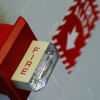News Analysis: A rude wake-up call for hospitals
What happens when a fire breaks out at a crowded shopping mall or a government hospital? A flurry of questions comes to one's mind: which shopping mall; which hospital; how crowded the place is, and so forth.
The city residents saw fire at both such places in a span of thirteen years. There was a blaze at the Bashundhara City Shopping Mall at Panthapath in 2006, and only a couple of days ago, a fire broke out at Suhrawardy Medical College Hospital, one of the busiest government hospitals in the country.
Thankfully, there was no heavy casualty, except for the untimely death of an infant, who lost his life while being taken out of the hospital at Sher-e-Bangla Nagar.
There were around 1,200 patients, including 10 at the Intensive Care Unit, when the fire started at the hospital. And understandably, they were way more vulnerable than, let's say, 1,200 shoppers at Bashundhara mall, who can easily run to safety in case of a fire.
Anyone who has been to a government hospital would agree that it was a matter of luck that the casualty of Thursday's fire was just one.
The fire broke out at the store room on the ground floor. It spread to the first floor where the operation theatres and the post-operative sections are located. The blaze then raged to the second floor where C-section patients and newborns are treated.
A sick person is vulnerable, but one doesn't need to be a doctor to understand that C-section patients, newborns and surgery patients are most vulnerable because most of them cannot move on their own if there is an accident or disaster.
And in case of Thursday's fire, all the ingredients were there for a major catastrophe.
There was a fire alarm system, but it didn't work -- quite expectedly. The patients and their attendants started screaming as they saw smoke.
Fire fighters could rush to the scene in no time because there was a fire station close to the hospital. But they couldn't start working in full throttle right away as there wasn't enough water. There was a reservoir at the hospital for an emergency situation, but there wasn't any water in it.
According to a study by the government's fire department in 2017, more than 40 percent of the hospitals and healthcare centres in the capital have no fire-fighting capabilities. And nearly 60 percent have nominal arrangements while, alarmingly, just 2.5 percent are relatively compliant.
The study, conducted on 433 hospitals and healthcare centres in the capital, pointed out that most hospitals lack evacuation ramps, fire exit plans, fire detection and alarm systems, hose reels, safe refuge assembly spaces, trained in-house fire-fighting teams, fire escape routes, fire lifts, access roads and water reservoirs.
After Thursday's fire at Suhrawardy hospital, fire fighters appeared helpless, like on so many occasions in the past, for lack of disaster preparedness.
"All hospitals should be fire-safety compliant. Otherwise, there could be heavy casualties. We have written so many times to the authorities of different hospitals, but no one seems to care," Brig Gen Ali Ahmed Khan, director general of the Fire Service and Civil Defence, told The Daily Star yesterday.
"Just think what would happen if there is a fire at Dhaka Medical College Hospital or Mitford Hospital,” he mentioned.
Now let's have a look at what happens if a fire breaks out at a hospital with efficient and effective fire-fighting system.
On Wednesday, a fire broke out at the Aultman Hospital in Ohio's Canton, the USA. The following day, the hospital issued a statement saying: “Around 11:00pm, the fire alarm system was activated by a fire in a first floor Bedford building office area. The sprinkler system activated, extinguishing the fire, and the Canton Fire Department quickly arrived at the scene. No patient or staff was injured, and no services were affected.”
The statement is pretty much self-explanatory.
At the Suhrawardy hospital on Thursday, all services had to be put on hold soon after the fire broke out around 6:00pm. And the authorities were not able to fully resume services till the filing of this report at 8:00pm.
Talking to reporters, AKM Shakil Newaz, director (operation and maintenance) of the Fire Service and Civil Defence, said, “Some fire-fighting tools were there at the hospital. But there was a lack of preparedness. It's like you have equipment but there is no one to operate it.”
Sounding a note of caution, Zahid Maleque, minister for health and family welfare, told reporters, “This is a lesson for us. This is a wakeup call. Many of our hospitals are old. Our fire-fighting systems need modernisation. Electric wires and instruments at the hospitals should be checked.”

 For all latest news, follow The Daily Star's Google News channel.
For all latest news, follow The Daily Star's Google News channel. 




Comments